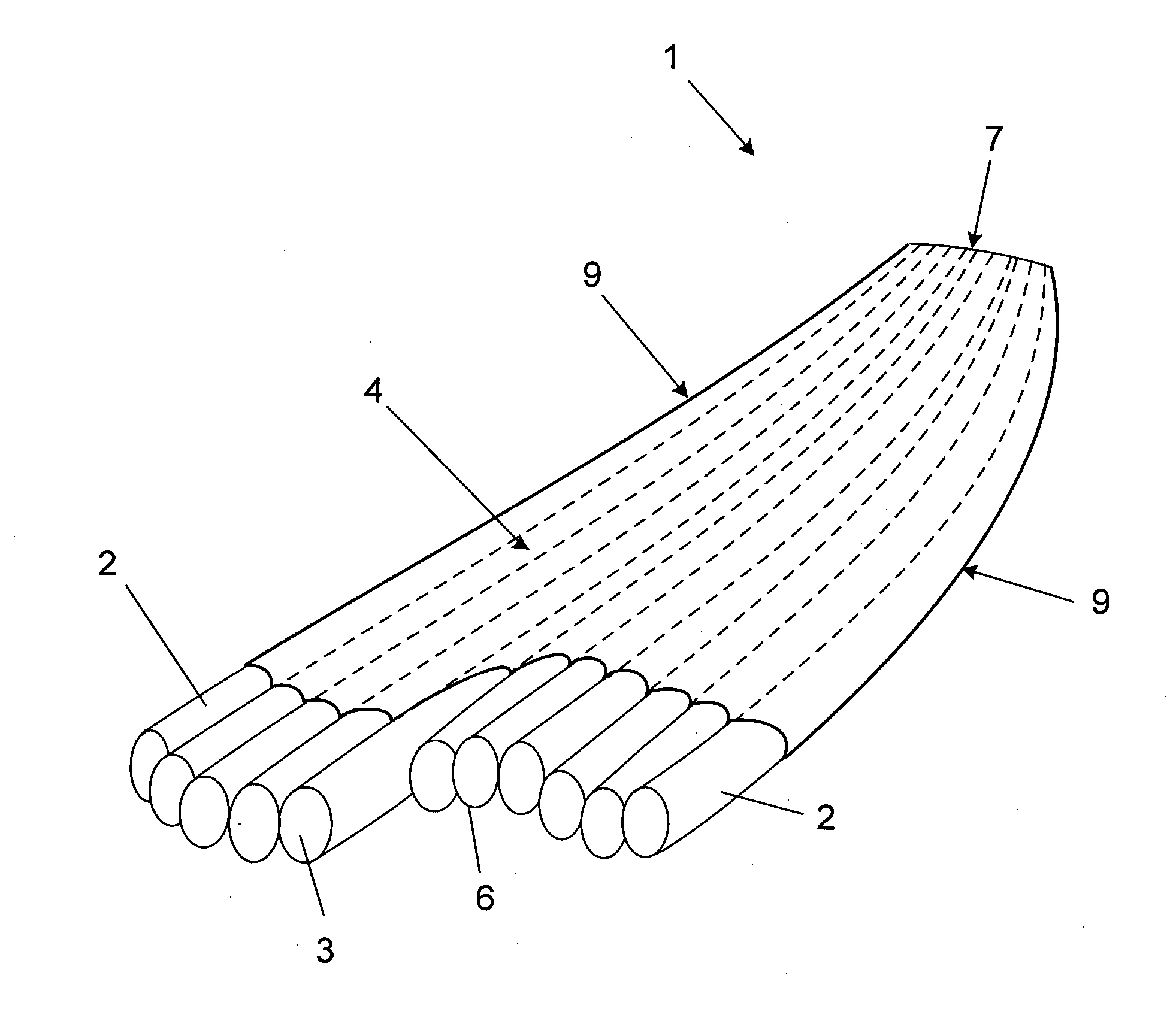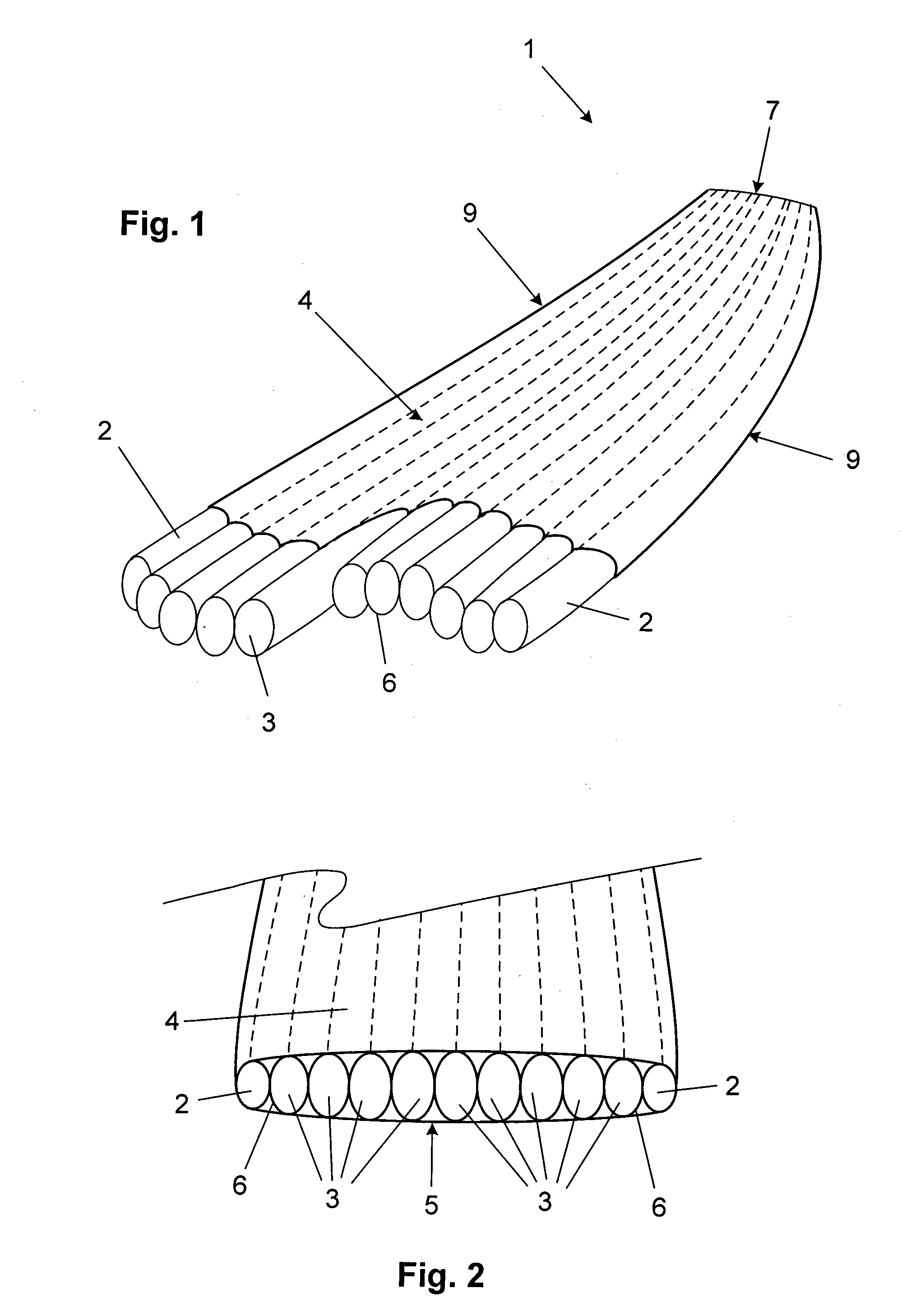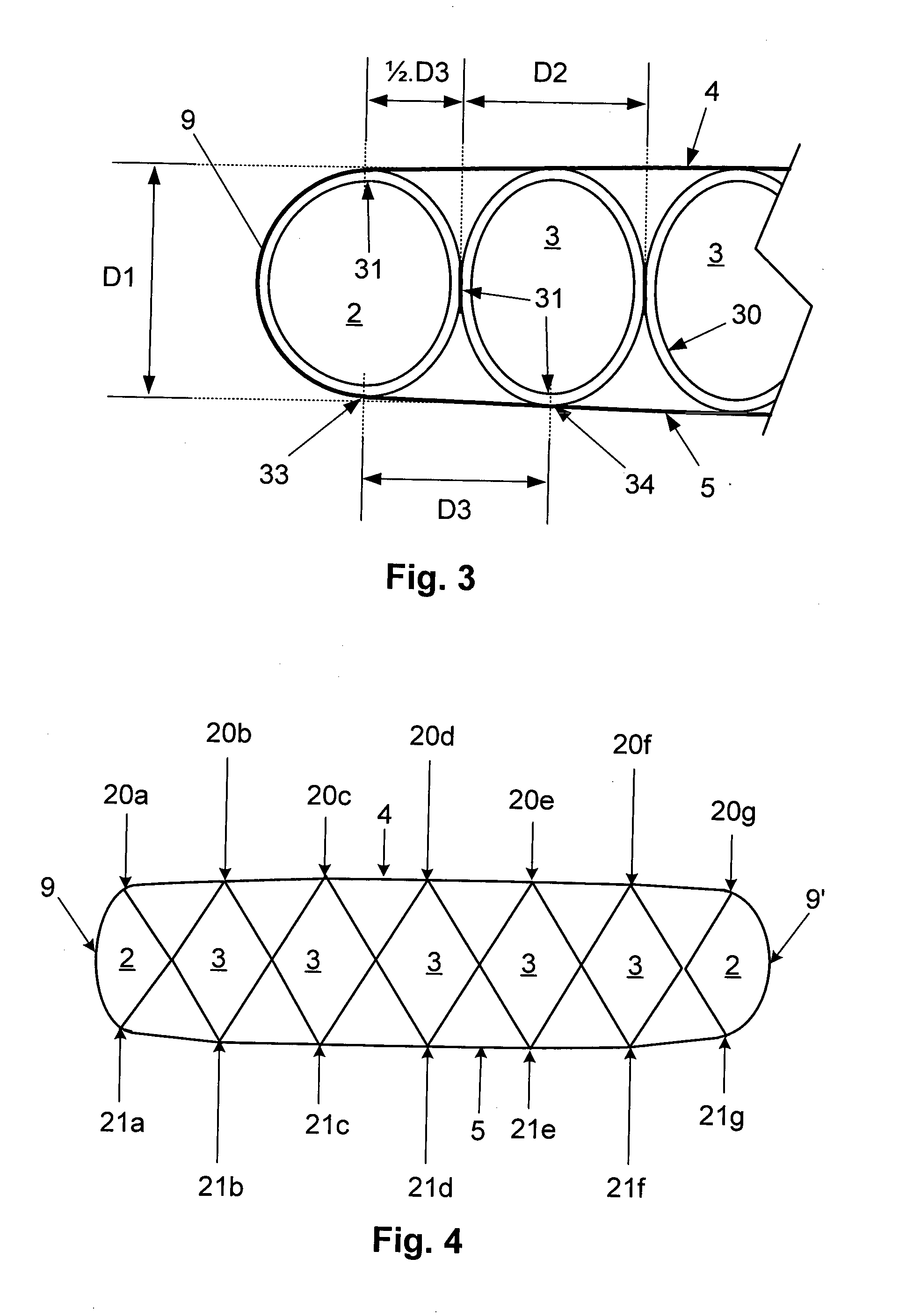Inflatable structure
- Summary
- Abstract
- Description
- Claims
- Application Information
AI Technical Summary
Benefits of technology
Problems solved by technology
Method used
Image
Examples
Embodiment Construction
[0044]The following description is given by way of example only to illustrate the invention. It is not intended to limit the scope of use or functionality of the invention. In particular, the invention is not limited in its application to the details of construction and the arrangements of components set forth in the following description or illustrated in the accompanying drawings. The invention is capable of other embodiments and of being practiced or being carried out in various ways. Also, it is to be understood that the phraseology and terminology used is for the purpose of description and should not be regarded as limiting.
[0045]In one embodiment the invention provides for an inflatable structure suitable for use in numerous products including but not limited to water craft such as kayaks or canoes, surfboards, surf skis and paddle boards such as a stand-up paddle boards (SUPs), inflatable wings, sports kites such as those used in Kiteboarding, shelters such as tents and awnin...
PUM
| Property | Measurement | Unit |
|---|---|---|
| Pressure | aaaaa | aaaaa |
| Electrical resistance | aaaaa | aaaaa |
| Flexibility | aaaaa | aaaaa |
Abstract
Description
Claims
Application Information
 Login to View More
Login to View More - R&D
- Intellectual Property
- Life Sciences
- Materials
- Tech Scout
- Unparalleled Data Quality
- Higher Quality Content
- 60% Fewer Hallucinations
Browse by: Latest US Patents, China's latest patents, Technical Efficacy Thesaurus, Application Domain, Technology Topic, Popular Technical Reports.
© 2025 PatSnap. All rights reserved.Legal|Privacy policy|Modern Slavery Act Transparency Statement|Sitemap|About US| Contact US: help@patsnap.com



